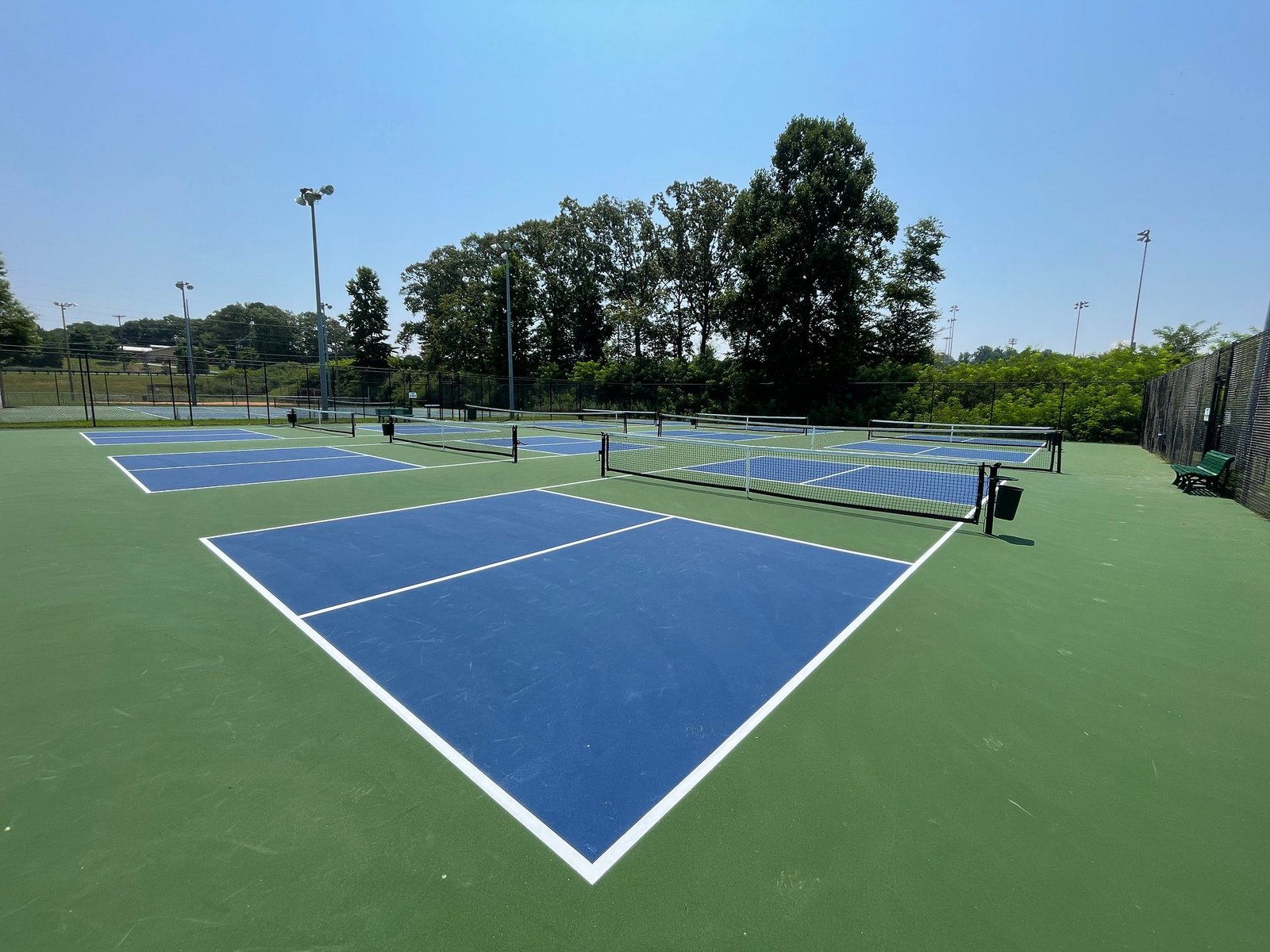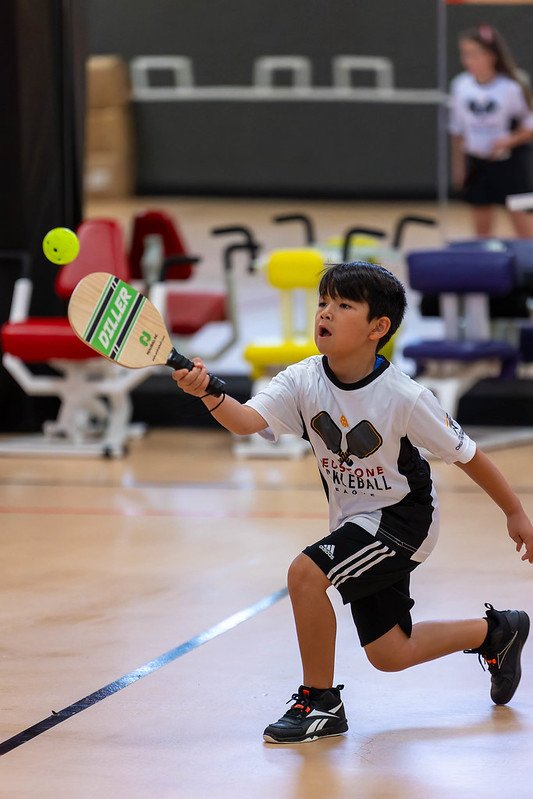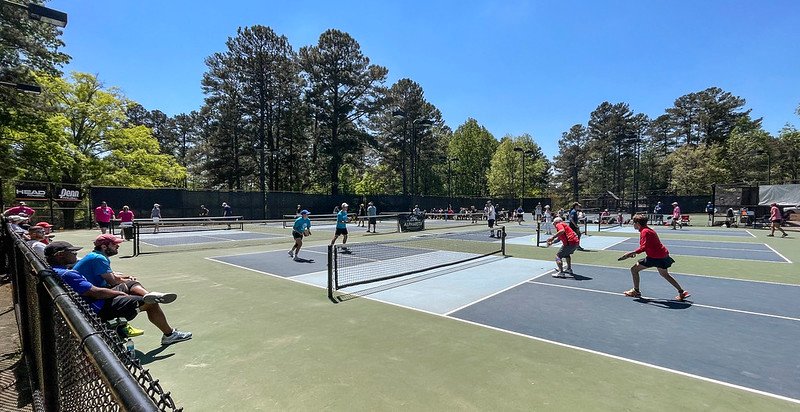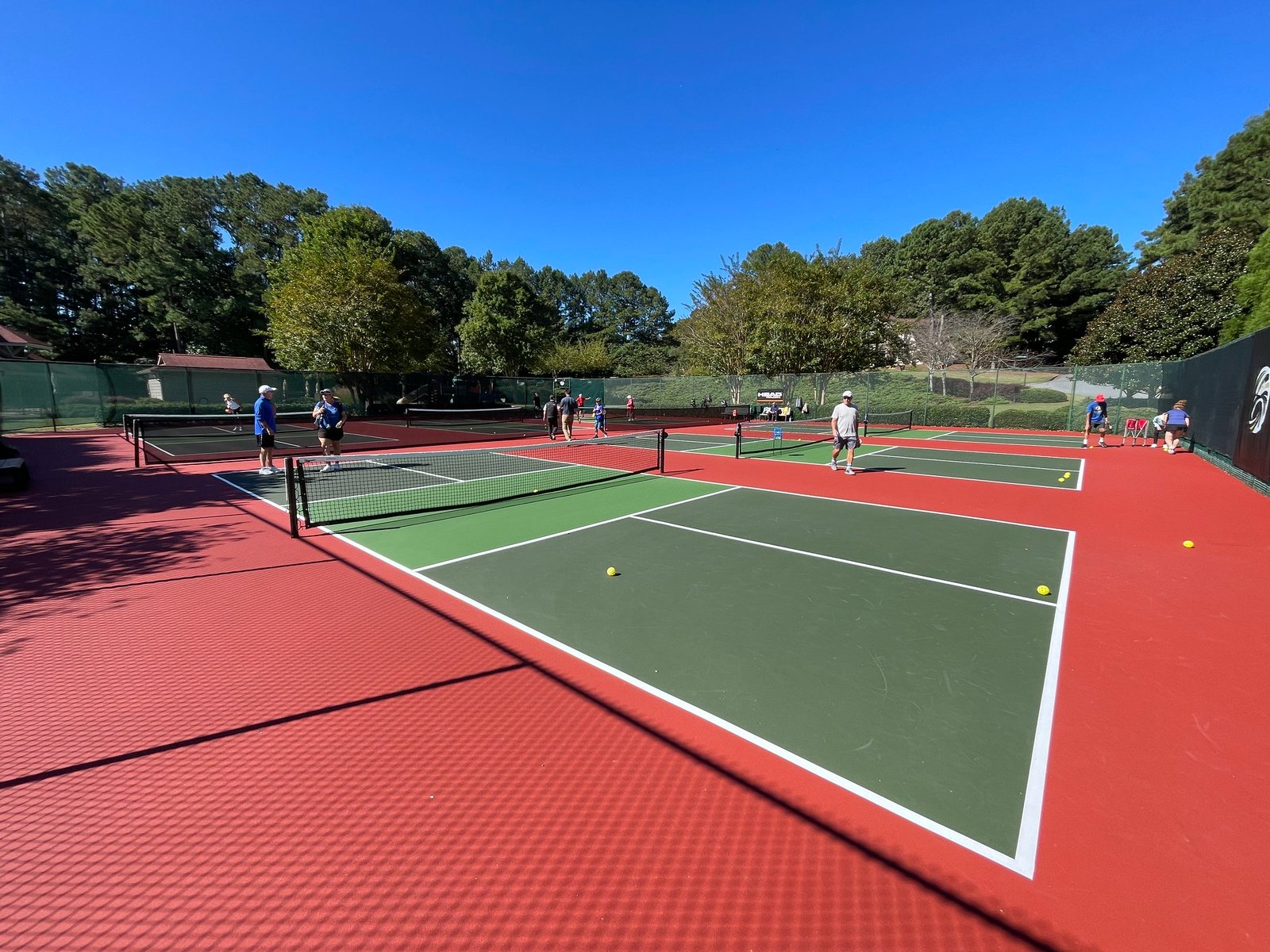In the world of recreational sports, enthusiasts seek the thrill of engaging in activities that balance fun and competitiveness. Amidst this pursuit, one sport has garnered immense popularity in recent years—Pickleball. This dynamic activity combines elements from tennis, badminton, and table tennis, delivering an exciting and accessible experience for players of all ages and skill levels.
Embraced by a growing community, the game’s allure extends beyond its simplicity and into the realm of strategy and skill. To partake in this thrilling pastime, understanding the essentials is paramount.
Knowledge of pickleball rules forms the backbone of gameplay, ensuring fair and enjoyable competition. Equally crucial is access to suitable pickleball equipment—a catalyst for honing one’s abilities on the court. From paddles to balls and specialized footwear, the right gear significantly impacts a player’s performance and overall enjoyment.
However, the journey into the world of pickleball continues beyond there. Constructing a pickleball court or setting up a temporary one demands attention to detail. Proper court dimensions, net height, and boundary lines constitute the foundation for an authentic playing experience. The art of pickleball court construction requires precision and adherence to standard measurements, providing players with an environment conducive to showcasing their skills.
Whether embarking on a competitive match or engaging in casual play with friends and family, the excitement of pickleball transcends the boundaries of age or expertise. A harmonious blend of strategy, athleticism, and camaraderie, this sport beckons individuals to step onto the court and immerse themselves in the thrill of the game. From understanding the intricacies of pickleball rules to mastering court setup and equipment selection, each facet contributes to an unforgettable pickleball experience.
Table of Contents
Can you make a mini pickleball court?
Creating a mini pickleball court is feasible and offers a scaled-down version of the traditional court for smaller spaces or limited setups. A mini pickleball court typically adapts the fundamental elements of the standard court to a reduced size, allowing enthusiasts to enjoy the game in more confined areas, such as driveways, small yards, or indoor spaces like gymnasiums or multipurpose rooms.
To craft a mini pickleball court, begin by marking the boundaries with tape or chalk. Utilize a smaller area, adjusting the dimensions proportionally while preserving the ratio between width and length. For instance, a mini court might be roughly 10 feet in width by 22 feet in length for doubles or 10 feet by 11 feet for singles, maintaining the 2:1 length-to-width ratio of a standard court.
Once the boundaries are delineated, set up a portable net system at the center, ensuring it aligns with the scaled-down dimensions. Adjust the net’s height to meet the appropriate specifications. Emphasize accuracy in measurements and markings to create a miniature yet functional pickleball court.
While it may not replicate the whole experience of a standard court, a mini pickleball court allows for enjoyable gameplay, practice, and skill development within confined spaces, making the sport accessible and entertaining for enthusiasts in various environments.
Can you play pickleball on a short tennis court?
Yes, it is possible to play pickleball on a short tennis court with some modifications. While a standard pickleball court measures 20 feet wide by 44 feet long, a short tennis court is typically larger, measuring 36 feet by 78 feet. However, the versatility of pickleball allows for adaptation to fit within the confines of a short tennis court.
To adjust for the smaller space, players can utilize temporary pickleball court lines or markers to create a playable area within the existing tennis court. By marking off the boundaries for pickleball within the tennis court’s dimensions, players can establish a smaller court suitable for pickleball gameplay.
This modified space may not perfectly align with the standard pickleball court size, potentially altering some aspects of the game, such as shorter sidelines or a reduced playing area.
Consequently, players might need to adapt their strategy and positioning to accommodate the smaller court size.
While playing pickleball on a short tennis court might deviate from the traditional court size, it allows enthusiasts to enjoy the game in spaces where a dedicated pickleball court might not be available. With adaptations and a flexible approach, players can still experience the fun and competitiveness of pickleball, albeit within a modified playing area on the short tennis court.
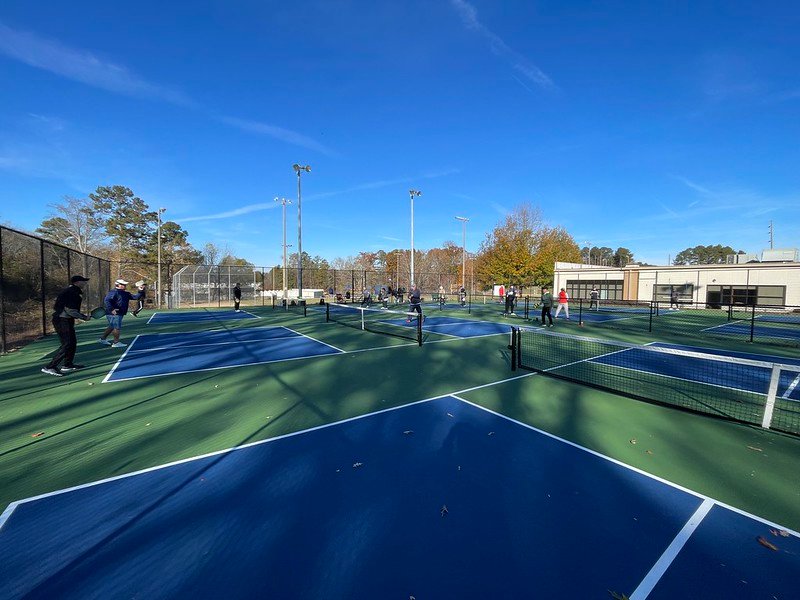
Temporary Pickleball Court Setup
Setting up a temporary pickleball court can be done with a few basic materials and measurements. Here’s a simple guide to help you create a makeshift pickleball court:
Materials Needed
Creating a makeshift pickleball court requires specific materials to ensure accurate measurements and delineation of the playing area. The following materials are essential for setting up a temporary pickleball court:
Tape or Chalk
This is used to mark the court boundaries on the ground or playing surface. It’s crucial for creating the outline of the court, including the sidelines and baselines. Tape or chalk helps players visualize the court’s dimensions during gameplay, ensuring fair and accurate play.
Net and Poles
A portable pickleball net system is a fundamental component for establishing the net across the court’s center. These portable nets are typically lightweight and adjustable, making them easy to set up and dismantle. They come with poles that support the net at the regulation height required for pickleball gameplay.
Measuring Tape
Precision is key when setting up a temporary pickleball court. A measuring tape ensures accurate court dimensions according to the official standards. It helps mark the correct distances for the sidelines, baselines, and non-volley zone (the kitchen), ensuring the court adheres to the regulation size of 20 feet wide by 44 feet long for doubles and 20 feet by 22 feet for singles.
With these materials in hand, enthusiasts can efficiently and accurately establish a temporary pickleball court in various locations. Whether it’s in a driveway, a gymnasium, or any flat surface area, having the necessary materials ensures the court is properly marked and the net is securely set up. This allows players to enjoy the game while maintaining adherence to the official pickleball court dimensions and rules, contributing to a fair and enjoyable playing experience for all participants.
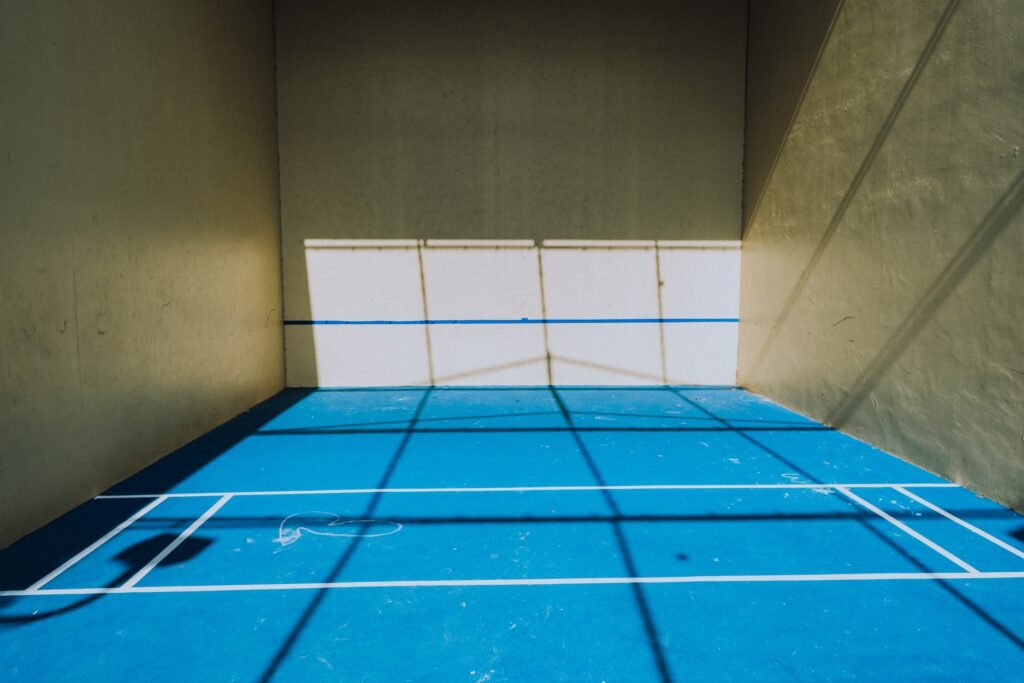
Steps to Set Up a Temporary Pickleball Court
Find a Suitable Area
When scouting for an appropriate location to set up a temporary pickleball court, finding a flat and open space is crucial to ensure a smooth and fair playing surface. The ideal area should be spacious enough to accommodate the dimensions of a standard pickleball court.
For doubles play, the court should measure 20 feet in width and 44 feet in length. Meanwhile, for singles matches, the court’s length is reduced to 22 feet while maintaining the same width of 20 feet. It’s essential to have ample space around the court’s perimeter to prevent any obstructions or interference during gameplay, allowing players to move freely and engage in the game comfortably.
The chosen space could be a backyard, a parking lot, a gymnasium, or any other flat surface area with adequate dimensions. Prioritizing a level ground minimizes the risk of irregular bounces and ensures a fair playing field for all participants. By confirming that the selected space aligns with the required measurements, players can set up a temporary pickleball court that adheres to the official dimensions, facilitating enjoyable and competitive gameplay experience for everyone involved.
Mark the Court Boundaries
When marking the boundaries of a temporary pickleball court, precision is paramount to ensure the court adheres to the official dimensions. Begin by measuring and marking the corners of the court with either tape or chalk. For a doubles court, establish a width of 20 feet and a length of 44 feet. For a singles court, maintain the 20-foot width but shorten the length to 22 feet.
Using a measuring tape, accurately measure and mark each corner, ensuring the distances align with the intended court size. Once the corners are marked, connect the lines between them to form the court’s perimeter. This step-by-step process ensures that the court’s dimensions are precise and compliant with official standards, allowing for a proper playing area.
Attention to detail during the marking phase is crucial, as it determines the boundaries where gameplay will take place. Double-checking the measurements and ensuring straight lines are drawn will contribute to a well-defined court layout. Players will benefit from a properly marked court, as it provides clarity during games, maintaining fairness and adherence to the established rules and court dimensions of pickleball.
Set Up the Net.
Assembling the portable pickleball net and poles according to the manufacturer’s instructions is crucial for setting up the court correctly. Typically, these portable net systems are designed to be user-friendly, often featuring simple mechanisms for easy setup. Following the provided guidelines ensures proper alignment and stability of the net.
Once assembled, placing the net in the center of the court is essential. Regulation height maintenance is key; the net’s height should measure 34 inches at the center and 36 inches at the sidelines. This height variation compensates for the slight curvature of the court, ensuring fairness in gameplay.
Ensuring precise net placement guarantees an accurate division between the two sides of the court, allowing for a fair and balanced game. Additionally, securely anchoring the net’s poles ensures stability during play, preventing any unwanted movement or disruptions.
By adhering to the manufacturer’s instructions and meticulously setting up the net according to regulation heights, players can establish a conducive environment for competitive and enjoyable pickleball matches. This attention to detail contributes significantly to the overall integrity and fairness of the game, allowing players to focus on their skills and strategy without concerns about the net’s placement or height inconsistencies.
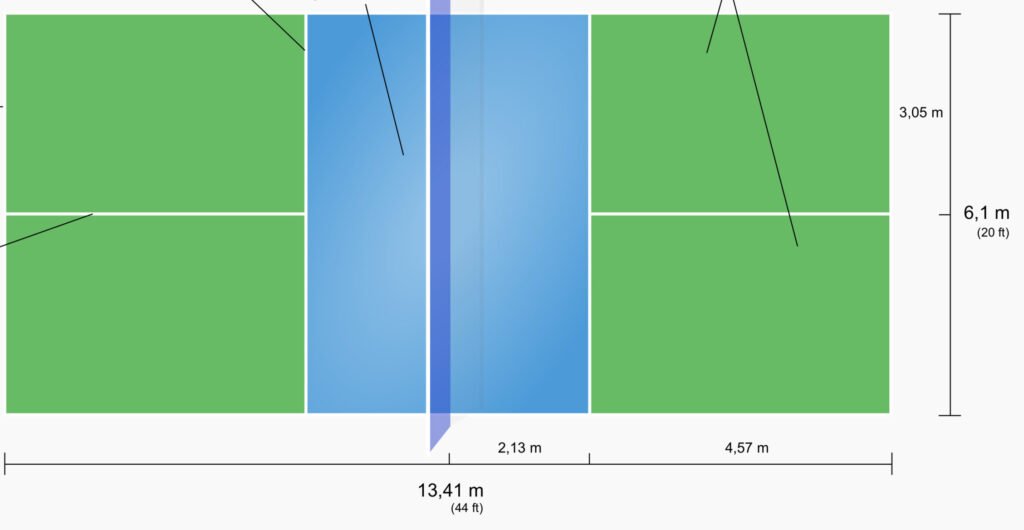
Check Measurements
Verifying the court dimensions and net height is crucial to ensure conformity with official pickleball standards, guaranteeing a fair and accurate gameplay experience. Utilizing a measuring tape, meticulously recheck the court’s dimensions to confirm it aligns precisely with the regulation size: 20 feet in width by 44 feet in length for doubles, and 20 feet by 22 feet for singles.
Equally important is verifying the net’s height, which should be set at 34 inches at the center and 36 inches at the sidelines. This standard height ensures consistency and fairness during matches, preventing any undue advantage or discrepancy in gameplay.
Upon double-checking, if discrepancies arise, promptly make the necessary adjustments. Correct any inaccuracies in the court dimensions or the net’s height to adhere closely to the official standards. This attention to detail ensures that players engage in matches within a properly delineated court, maintaining the integrity of the game and allowing for consistent play based on established rules. Ultimately, confirming these measurements guarantees a level playing field for all participants, enhancing the overall pickleball experience.
Optional Markings:
Designating the non-volley zone, commonly referred to as “the kitchen,” within a pickleball court is vital for players to adhere to specific rules and gameplay strategies. This area, situated 7 feet from the net on both sides, serves a crucial role in shaping the dynamics of the game.
Marking this region with additional lines or distinct markings ensures players recognize and respect its boundaries. The kitchen restricts players from executing volleys, essentially shots hit without the ball bouncing, while standing inside this designated zone. This rule encourages strategic play, emphasizing groundstrokes and positioning over aggressive net play.
Clear demarcation of the kitchen facilitates fair gameplay by preventing players from approaching the net excessively to gain an unfair advantage. It fosters a balance between offense and defense, promoting skillful shots and precise placement rather than sheer power at close range.
By clearly outlining the non-volley zone with additional lines or markings, players are reminded of the strategic significance of this area, encouraging tactical maneuvers and fostering a more engaging and strategic pickleball experience on the court.
Secure the Setup
Securing the net and boundary markings is imperative to maintain the integrity of the pickleball court during gameplay. Instability or shifting of these elements can disrupt the flow of the game and cause discrepancies in play.
Firstly, ensuring the portable pickleball net is firmly anchored is essential. Many portable net systems come equipped with sturdy bases or tensioning mechanisms designed to keep them stable. Properly setting up the net’s poles and tightening the net to the correct height is crucial. Using additional stakes or weights at the base of the poles can further fortify the net, preventing unwanted movement or sagging.
Secondly, the boundary markings, whether made with tape or chalk, should be securely affixed to the ground or playing surface. Ensuring they are well-adhered or properly traced is vital to avoid smudging or fading during gameplay. Additionally, periodically checking the boundary lines between matches or breaks can help rectify any potential shifts or distortions caused by player movement or weather conditions.
By meticulously securing both the net and boundary markings, players can minimize interruptions during gameplay, fostering an environment where participants can focus on the game without concerns about inaccuracies or disruptions caused by shifting equipment or markings.
It’s crucial to recognize that while a temporary pickleball court setup allows for casual play and recreational enjoyment, official tournaments or events require adherence to specific standards set by governing bodies like the USA Pickleball Association (USAPA). These standards encompass precise court measurements, quality materials, and equipment to ensure fairness and uniformity in competitive play.
For sanctioned events, organizers must meticulously follow USAPA guidelines, employing regulation-sized courts measuring 20 feet wide by 44 feet long for doubles and 20 feet by 22 feet for singles. This involves using standardized nets, poles, court markings, and surface materials meeting official specifications.
Prioritizing safety when assembling sports equipment or laying out playing areas is paramount. Properly secured nets, clearly defined court boundaries, and adequate space around the court help prevent injuries during gameplay.
While a basic temporary setup suffices for informal play, hosting official tournaments necessitates meticulous attention to detail, complying with USAPA standards. Adhering to these regulations ensures fairness, consistency, and safety for participants, fostering a competitive yet enjoyable pickleball experience at sanctioned events.

